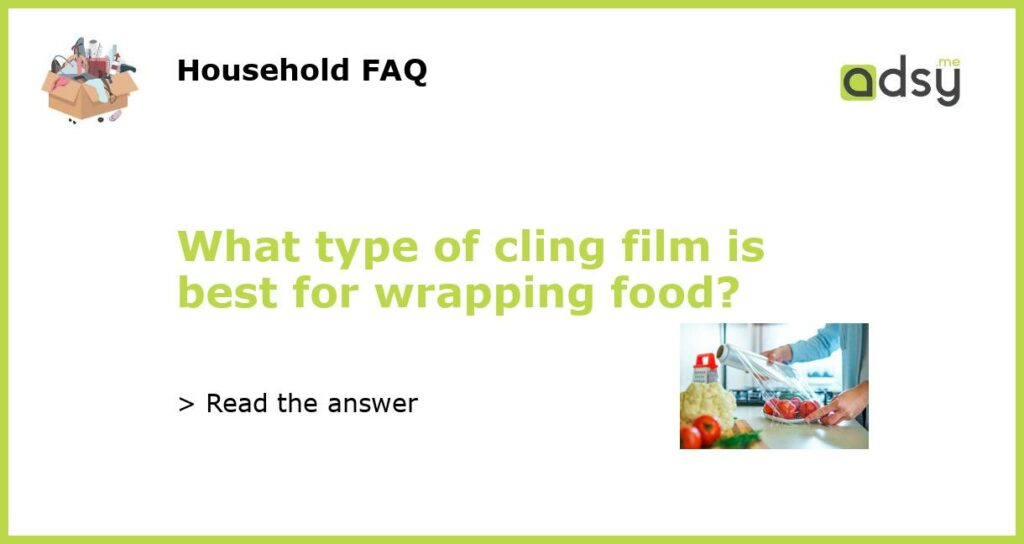Understanding Cling Film: What Is It and What Are Its Uses?
Most people know cling film as the thin, clear plastic wrap that’s commonly used in the kitchen for covering food items. Cling film is a type of plastic film that’s made from polyvinyl chloride (PVC). It’s widely used in the food industry for wrapping, sealing, and covering food products, among other things. Cling film is also known by other names, depending on the region, such as plastic wrap, cling wrap, saran wrap, or food wrap. But what makes cling film such a versatile and popular kitchen staple?
What Should You Consider When Choosing a Cling Film?
When it comes to choosing a cling film for wrapping food, there are some factors to consider. One of the main factors is the type of food you’re wrapping. Some foods, such as acidic or fatty foods, can react with the plastic and cause it to break down or transfer onto the food. Another factor is the strength and durability of the cling film, especially if you’re using it to store or transport food. Additionally, you may want to consider the size of the roll, ease of use, and sustainability factors, such as recyclability and environmental impact.
The Best Types of Cling Films for Wrapping Food
There are several types of cling films available on the market, each with its own specific features and benefits. These are some of the most popular types of cling films for wrapping food:
- Low-density polyethylene (LDPE) cling film: This type of cling film is ideal for wrapping food items that need to be kept fresh for a short time, such as sandwiches or leftovers. It’s soft, clingy, and easy to handle, making it perfect for everyday use.
- Polyvinylidene chloride (PVDC) cling film: PVDC cling film is a bit more expensive than LDPE cling film, but it offers superior protection against moisture, air, and odors. It’s perfect for wrapping meat, fish, or strong-smelling foods.
- Biodegradable cling film: Biodegradable cling films are made from natural materials, such as cornstarch or cellulose, that can break down in the environment. They’re a more sustainable option than traditional PVC cling films and are ideal for wrapping food items that won’t be stored for too long.
Tips for Using Cling Film Safely and Effectively
While cling film is a handy tool in the kitchen, it’s important to use it safely and effectively. Here are some tips for using cling film:
- Avoid using cling film in the microwave unless it’s labeled microwave-safe.
- Keep cling film away from hot surfaces and open flames, as it can easily melt or catch fire.
- Don’t reuse cling film that’s been in contact with raw meat or other hazardous materials.
- Make sure you’re using the right type of cling film for the food item you’re wrapping.
- Store cling film in a cool, dry place away from direct sunlight.
The Bottom Line: Choose the Right Cling Film for Your Food Wrapping Needs
Cling film is a versatile and easy-to-use tool in the kitchen, but choosing the right type of cling film for your needs is important. Consider the type of food you’re wrapping, the strength and durability of the cling film, and any sustainability factors. With the right cling film, you can keep your food fresh and protected for longer, without any negative effects on the environment or your health.






